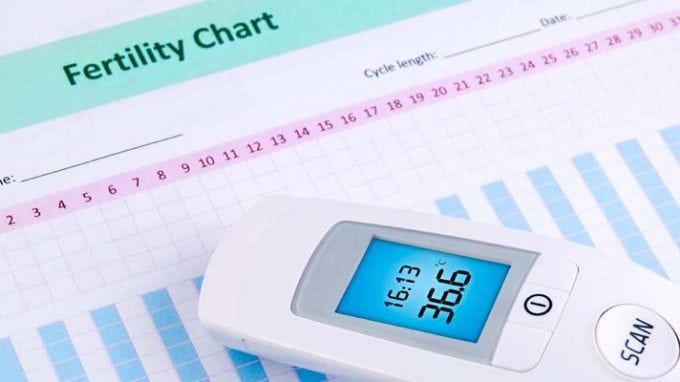Tracking your fertility, and more specifically, charting your menstrual cycle is an essential part of fertility planning. For some women, this can seem like an intimidating process and they aren’t sure where to start. But fear not: It isn’t as technical or complicated as it sounds. Below, find a fertility charting 101 crash course to help get you well on your way to successful conception!
Keeping Track of Your Cycle

To chart your cycle, you’ll want to graph out a few key dates on a calendar spreadsheet. First, you’ll make a note of the first day of your period as day one of your menstrual cycle and chart your periods for at least several months to determine your average cycle length. Next, according to WebMD, you should “subtract 18 days from the length of your shortest cycle: This is the first day you’re likely to be fertile. Next, subtract 11 days from the length of your longest cycle: This is the last day you’re likely to be fertile.”
If keeping a written chart isn’t your cup of tea, a modern twist to family planning: smartphone apps and online tools now exist to help you mark your period each month and make basic fertility prediction calculations.
Another handy tool for helping track your cycle is using at-home ovulation tracking kits which can help determine exactly when you’ll be ovulating and allow you to maximize your chances at conception. For those unfamiliar with how these at-home ovulation kits work, the American Pregnancy Association website has a detailed article explaining what the kits test for (primarily a substance called LH, or luteinizing hormone) and what the results mean, as well as basic guidelines for when to begin using the tests during your cycle. In general, it is recommended that you monitor and evaluate vaginal discharge, and only test when there is thick cervical mucous present. If you have tested and have gotten a positive result indicating ovulation is imminent, time intercourse to occur several times over the three-day period following the positive result.
Charting Basal Body Temperature

According to Parenting magazine, women with fertility concerns may want to carefully chart their basal body temperature with a special BBT thermometer designed to register the small, incremental changes in body temperature associated with ovulation to help rule out the chance that they aren’t ovulating at all, or to rule out a potentially serious illness called luteal phase defect, a condition related to hormone production that interferes with fertility.
Fertility Challenges
If you have charted your period, tracked your basal body temperature and tried every ovulation kit on the market and are still not getting pregnant, it’s time to talk to your doctor about other options to help boost your fertility. However, it is important to keep in mind that it’s perfectly normal for a healthy couple to try to conceive for several months and even up to a year without success. Your doctor can determine if any delay in conception is just nature taking its sweet time, or something that may need to be addressed medically before you can expect to make progress in the baby-making department.




